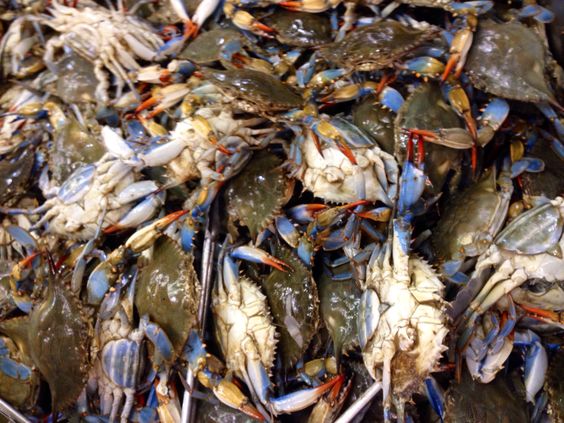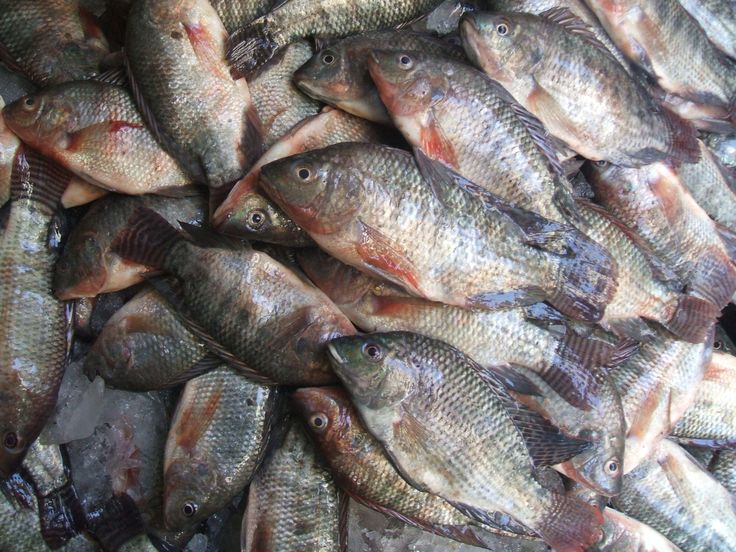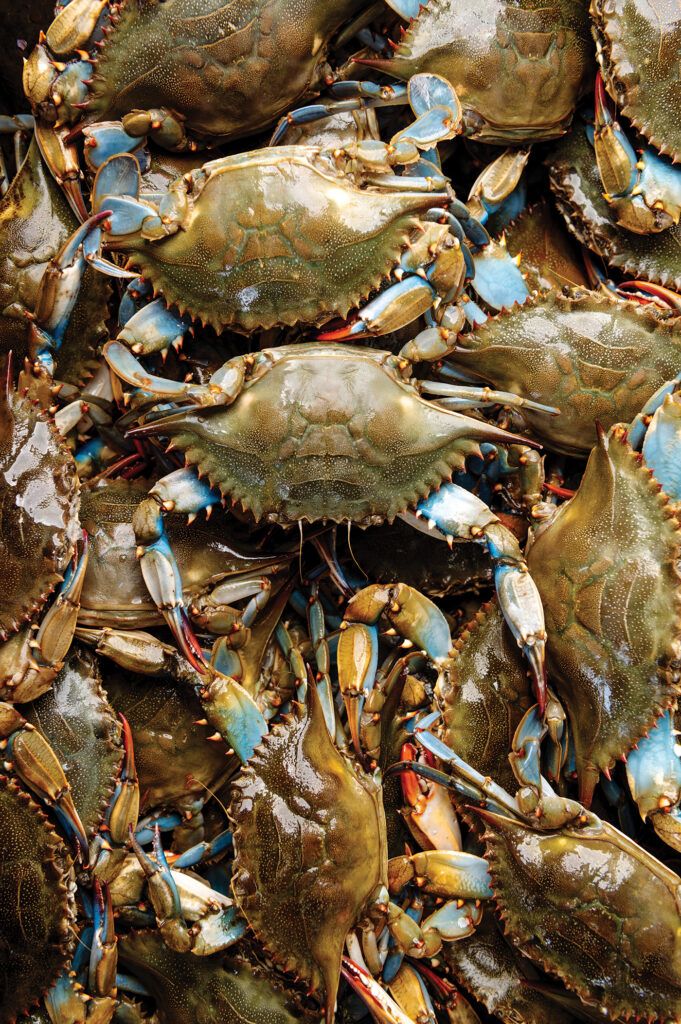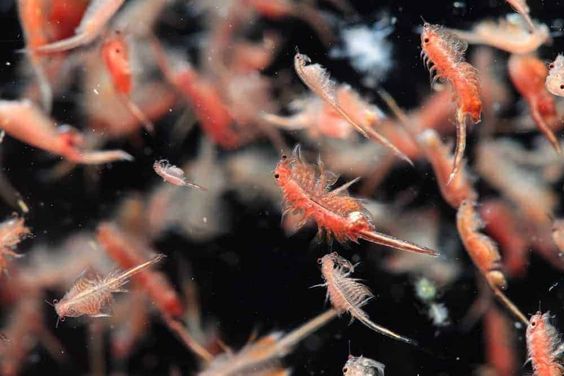Crab Adaptation: A Comprehensive Exploration
Crab Adaptation are fascinating creatures with a rich history of evolutionary adaptation. Their ability to thrive in diverse environments, from the deep ocean to sandy beaches and rocky shores, makes them one of the most successful groups of crustaceans. Understanding crab adaptation not only sheds light on their survival strategies but also offers insights into evolutionary biology and environmental science. This article delves into the various ways crabs have adapted to their environments, the benefits of these adaptations, and future research directions.
Crab Adaptation Concept
Crab adaptation is a fascinating and complex process that enables these organisms to thrive in various environments, from coastal waters to deep-sea habitats. Adaptation, in general, refers to the way organisms modify themselves to better suit their surroundings, ultimately increasing their chances of survival and reproduction. For crabs, this process is especially important given the often harsh and ever-changing conditions they face in aquatic ecosystems. Whether it’s temperature fluctuations, varying salinity levels, or predation threats, crabs must continuously adjust to survive.
Adaptations in crabs can be broadly categorized into three main types: morphological, behavioral, and physiological. Each of these categories plays a crucial role in helping crabs cope with their unique environments.
Morphological Adaptations
Exoskeleton
One of the most notable adaptations in crabs is their exoskeleton. The hard, protective shell serves as armor against predators and environmental hazards. This exoskeleton is composed of chitin, a tough, flexible material that provides structural support while allowing for movement. Additionally, the exoskeleton can vary in thickness and texture, depending on the crab’s habitat and lifestyle. For example, crabs living in rocky environments often have thicker, more robust shells compared to those in sandy or muddy areas.
Claws
Crabs are known for their distinctive claws, which play a crucial role in their survival. The size, shape, and strength of claws can vary widely among species and are adapted to their specific needs. For instance, some crabs have large, powerful claws for crushing shells and extracting food, while others possess smaller, more delicate claws for manipulating objects or for defense. The asymmetric claw size seen in some species, such as the fiddler crab, is a notable example of adaptation for specific functions, like attracting mates or establishing territory.
Body Shape
Crabs exhibit a variety of body shapes that reflect their adaptations to different environments. For example, the body of the coconut crab is adapted to climbing trees and handling coconuts, whereas the flat, wide body of the stone crab allows it to hide in crevices and squeeze into tight spaces. These variations in body shape are crucial for maximizing the crab’s ability to access resources and evade predators.
Behavioral Adaptations
Burrowing
Many crab species engage in burrowing behavior, which provides protection from predators and harsh environmental conditions. Burrowing crabs, such as the fiddler crab, create complex tunnel systems that serve as shelters. These burrows also help regulate temperature and moisture levels, creating a stable microenvironment for the crab. The ability to dig and maintain burrows is a key adaptation for survival in intertidal and mangrove habitats.
Camouflage
Camouflage is another important behavioral adaptation in crabs. By blending in with their surroundings, crabs can avoid detection by predators. Some species, like the decorator crab, actively cover themselves with materials from their environment, such as algae or shells, to enhance their disguise. Others rely on their natural coloration and patterns to match their habitat. This behavior not only aids in predator avoidance but also helps in ambush hunting strategies.
Social Behavior
Crabs exhibit a range of social behaviors that are adaptive to their environments. For example, some species are solitary and only come together for mating or during periods of resource scarcity. Others, like the vampire crab, display complex social structures and cooperative behaviors, such as group defense and communal burrow maintenance. These social adaptations can enhance survival by providing additional protection and increasing foraging efficiency.
Physiological Adaptations
Respiration
Crabs have adapted various respiratory mechanisms to survive in different environments. Terrestrial crabs, such as the coconut crab, have evolved specialized gills that function efficiently in low-oxygen environments. These gills are adapted to extract oxygen from both air and water. In contrast, aquatic crabs rely on traditional gills to extract oxygen from water. Some species can also regulate their respiratory rate based on environmental conditions, allowing them to survive in fluctuating oxygen levels.
Osmoregulation
Osmoregulation is crucial for crabs living in estuarine and intertidal zones where salinity levels vary. Crabs have developed mechanisms to regulate their internal salt balance and maintain homeostasis. This involves the ability to excrete excess salts and retain water in hypertonic environments, and vice versa. For example, the green crab has specialized excretory structures called antennal glands that help in osmoregulation, allowing it to survive in a wide range of salinities.

Benefits of Crab Adaptation
The benefits of adaptation in crabs are far-reaching, affecting not only their own survival and reproductive success but also the broader ecosystems they inhabit. By developing unique adaptations, crabs are able to thrive in environments that are often harsh and unpredictable. These adaptations, which can be physical, behavioral, or physiological, allow crabs to navigate their surroundings more effectively, ensuring their continued survival and the propagation of their species. At the same time, the ecological impact of crab adaptations plays a vital role in maintaining the health of coastal ecosystems, contributing to processes such as soil aeration, nutrient cycling, and the support of biodiversity.
Survival and Reproduction
The most immediate and critical benefit of crab adaptation is the increased likelihood of survival and reproductive success. Crabs that have evolved effective adaptations are better equipped to face the various environmental challenges they encounter, such as fluctuations in temperature, salinity, or the presence of predators. For example, the burrowing behavior of crabs offers multiple survival advantages. By digging into sand or mud, crabs can protect themselves from predators and extreme weather conditions. Additionally, these burrows serve as shelter and breeding sites, offering a safe environment where crabs can reproduce and raise their offspring.
Adaptations that improve feeding strategies also play a crucial role in survival. Crabs with specialized claws or feeding behaviors can access a wider range of food sources, ensuring they get the nutrients they need even in challenging conditions. For example, some crabs have claws that are adapted to crack open hard-shelled prey, while others are skilled scavengers, taking advantage of whatever food is available in their habitat. By optimizing their feeding habits, crabs increase their chances of surviving periods of scarcity, which directly affects their ability to reproduce successfully.
Moreover, reproductive adaptations, such as migration behaviors or mating rituals, further enhance the reproductive success of crabs. Certain species, like the Christmas Island red crab, migrate in large numbers to specific breeding grounds, ensuring the survival of their young in optimal conditions. These reproductive strategies increase the chances of producing viable offspring, which is key to maintaining and growing crab populations.
Ecological Impact
In addition to the direct benefits of adaptation on individual crabs, these adaptations also have profound ecological implications. Crabs play a vital role in the ecosystems they inhabit, and their adaptations contribute to the health and functioning of these environments. One of the most notable ecological benefits of crab adaptations is their contribution to soil aeration and nutrient cycling through burrowing activities. When crabs dig into the ground to create burrows, they mix the soil, increasing its oxygen content. This aeration promotes plant growth, as plants require well-aerated soil for healthy root development.
Crab burrowing also contributes to nutrient cycling, a process that is essential for maintaining the fertility of coastal ecosystems like mangroves, salt marshes, and seagrass beds. By disturbing the soil, crabs help release nutrients that would otherwise remain trapped in the sediment. These nutrients are then available to plants and other organisms, supporting the overall health of the ecosystem. As crabs feed and move through their environment, they also help in the decomposition process, breaking down organic matter and recycling it back into the ecosystem.
Additionally, crab adaptations can support biodiversity by creating habitats for other species. For instance, the burrows made by crabs can provide shelter for small fish, invertebrates, and other marine organisms. In this way, crabs indirectly contribute to the survival of other species within their ecosystem, enhancing biodiversity and creating a more resilient environment.
Goals of Studying Crab Adaptation
Studying crab adaptation provides valuable insights into evolutionary processes and the mechanisms of natural selection. By examining how crabs have adapted to different environments, scientists can better understand the factors driving evolutionary change and the role of adaptation in shaping biodiversity.
Understanding crab adaptation is also crucial for conservation and management efforts. Many crab species are threatened by habitat destruction, climate change, and overfishing. By studying their adaptations, researchers can develop more effective conservation strategies and management practices to protect these important species and their habitats.
Ideas for Future Research
Comparative Studies
Future research could focus on comparative studies of crab adaptations across different species and environments. By comparing the adaptations of crabs in various habitats, scientists can gain a deeper understanding of the factors influencing adaptation and the trade-offs involved in different survival strategies.
Impact of Climate Change
Investigating the impact of climate change on crab adaptations is another important area of research. Changes in temperature, salinity, and habitat availability can affect crab populations and their ability to adapt. Studying how crabs respond to these changes can provide valuable information for predicting and mitigating the effects of climate change on marine and coastal ecosystems.
Genetic Basis of Adaptation
Exploring the genetic basis of crab adaptation is a promising area of research. By identifying the genes and genetic pathways involved in adaptive traits, scientists can gain insights into the molecular mechanisms underlying adaptation and evolution. This knowledge could also have applications in biotechnology and conservation biology.

Topic Suggestions for Further Exploration
Exploring the diverse and intricate adaptations of crabs opens numerous avenues for scientific inquiry. The following topic suggestions highlight key areas that warrant further exploration to deepen our understanding of crab biology, ecology, and the challenges they face in a rapidly changing world. Each topic not only delves into specific aspects of crab adaptation but also underscores the broader implications for ecology, evolution, and conservation.
1. The Role of Exoskeleton Variation in Crab Adaptation
The exoskeleton is a fundamental feature of crabs, providing both protection and structural support. However, variations in exoskeleton structure among different crab species can significantly influence their survival and fitness across diverse environments. This topic involves examining how differences in thickness, hardness, coloration, and flexibility of the exoskeleton affect a crab’s ability to defend against predators, withstand environmental stresses, and perform essential functions such as molting and locomotion. Researchers can investigate how exoskeleton variations correlate with habitat types, such as rocky shores versus sandy beaches, and how these differences contribute to the ecological niches that different crab species occupy. Understanding exoskeleton diversity also has implications for studying the evolutionary pressures that shape these adaptations over time.
2. Behavioral Adaptations to Predation
Crabs employ a range of behavioral strategies to evade predators, ensuring their survival and enhancing their reproductive success. This topic focuses on investigating the specific actions and responses crabs use to avoid being preyed upon. These behaviors can include camouflage, nocturnal activity, aggressive displays, and escape responses such as rapid sideways movements. Additionally, some crabs engage in complex social behaviors, like forming groups or utilizing cooperative strategies to confuse or deter predators.
3. Osmoregulation in Estuarine Crabs
Estuarine environments, where freshwater meets seawater, present fluctuating salinity levels that pose significant challenges for osmoregulation—the process by which organisms maintain the balance of salts and water in their bodies. This topic explores the physiological mechanisms that estuarine crabs use to regulate their internal environments despite these changes. Studies can focus on the role of specialized gills, kidneys, and hormonal regulation in maintaining osmotic balance. Additionally, researchers can examine how different crab species adapt to varying degrees of salinity and the genetic and molecular bases of these adaptations. Understanding osmoregulation in estuarine crabs has important implications for conservation, particularly in the face of climate change and human-induced alterations to estuarine habitats that may disrupt salinity patterns.
4. The Evolution of Claw Size and Function
Claws are one of the most distinctive features of crabs, serving multiple functions such as feeding, defense, and communication. This topic involves analyzing the evolutionary drivers behind the variation in claw size and morphology among different crab species. Factors to consider include dietary preferences, habitat complexity, and mating behaviors. For instance, larger claws may be advantageous for cracking open hard-shelled prey or deterring predators, while smaller claws might be more efficient for handling delicate food items or engaging in intricate social interactions.
5. Impact of Habitat Destruction on Crab Adaptation
Habitat destruction, driven by factors such as coastal development, pollution, and climate change, poses significant threats to crab populations worldwide. This topic explores how the loss and alteration of habitats affect the ability of crabs to adapt to changing environmental conditions. Research can focus on the resilience and plasticity of different crab species, examining their capacity to adjust their behaviors, physiology, and morphology in response to habitat degradation. Crab Adaptation Additionally, studies can investigate the long-term consequences of habitat loss on genetic diversity, population dynamics, and ecosystem health. Understanding the impacts of habitat destruction on crab adaptation is crucial for developing effective conservation strategies aimed at preserving these important marine organisms and the ecosystems they support.

Advantages of Understanding Crab Adaptation
crab adaptation offers numerous advantages, benefiting not only the scientific community but also conservation efforts, resource management, and education. Crabs exhibit a wide range of adaptations that allow them to survive and thrive in various environments, from coastal areas to deep-sea habitats. By studying these adaptations, researchers can gain insights into broader ecological and evolutionary processes, support the development of effective conservation strategies, improve the sustainable management of natural resources, and provide valuable learning opportunities for future generations. The following sections explore the key advantages of understanding crab adaptation in more detail.
1. Enhanced Scientific Knowledge
Gaining a deeper understanding of crab adaptation enriches our knowledge of evolutionary biology and ecology. Crabs have evolved a variety of physical, behavioral, and physiological traits to cope with the challenges posed by their environments. By studying these adaptations, scientists can uncover patterns in natural selection, adaptation, and speciation, which contribute to the broader understanding of evolutionary processes. For example, analyzing the evolution of specialized traits like exoskeletons, claws, and osmoregulatory mechanisms can reveal how crabs have responded to environmental pressures such as predation, competition, and habitat variability.
In addition, understanding crab adaptations helps to clarify the relationships between different species within the broader marine ecosystem. Crabs often serve as key species in coastal and marine environments, playing significant roles in food webs, habitat formation, and nutrient cycling. By studying the adaptations that allow crabs to fulfill these ecological roles, scientists can gain a more comprehensive understanding of ecosystem dynamics, including predator-prey relationships, species interactions, and the factors that influence biodiversity.
2. Informed Conservation Efforts
Insights into crab adaptations can significantly enhance conservation efforts aimed at protecting marine and coastal ecosystems. Many crab species are sensitive to environmental changes such as habitat destruction, climate change, pollution, and overfishing. By understanding how crabs adapt to these challenges, conservationists can develop more targeted strategies for preserving crab populations and their habitats.
For example, crabs that rely on specific environmental conditions—such as estuarine crabs that require stable salinity levels—may be particularly vulnerable to habitat destruction or climate change-induced alterations in water salinity. Studying the osmoregulatory adaptations of these crabs can help scientists and conservationists identify the environmental factors most critical to their survival, leading to more effective habitat protection and restoration efforts. Additionally, understanding behavioral adaptations, such as migration or mating patterns, can inform the creation of marine protected areas that encompass critical breeding and feeding grounds.
Furthermore, conservation strategies that are informed by scientific knowledge of crab adaptations are more likely to succeed in the long term, as they are based on a deeper understanding of the ecological requirements and vulnerabilities of different crab species. This leads to better decision-making regarding habitat restoration, species protection, and ecosystem management.
3. Improved Resource Management
Understanding how crabs interact with their environment is crucial for the sustainable management of fisheries and other natural resources. Crabs are an important resource in many coastal economies, with some species being harvested for food and others playing essential roles in maintaining healthy ecosystems. For example, blue crabs and king crabs are highly valued in the seafood industry, while burrowing crabs contribute to the health of coastal ecosystems by aerating soil and facilitating nutrient cycling.
By studying crab adaptations, fisheries managers can develop more sustainable harvesting practices that ensure the long-term viability of crab populations. For instance, knowledge of reproductive and feeding behaviors can inform the design of fishing regulations that protect crabs during critical life stages, such as breeding or molting periods. Additionally, understanding how crabs adapt to environmental changes can help resource managers anticipate the potential impacts of climate change, habitat loss, and other stressors on crab populations, allowing for more proactive and adaptive management approaches.
Moreover, understanding the ecological role of crabs within their ecosystems allows resource managers to make informed decisions about protecting not only the crabs themselves but also the habitats and ecosystems that support them. This integrated approach to resource management ensures that conservation and harvesting efforts are balanced in a way that benefits both the environment and the economy.
4. Educational Value
Studying crab adaptation provides valuable educational opportunities for students, researchers, and the general public interested in marine biology and ecology. Crabs are a fascinating example of how organisms can evolve to meet the challenges of their environment, making them an excellent model for teaching concepts related to evolution, adaptation, and ecology. By observing how crabs respond to different environmental pressures, students can gain a deeper understanding of the principles of natural selection and adaptation.
Furthermore, research into crab adaptation offers opportunities for hands-on learning and fieldwork. Whether conducting studies on crab behavior in their natural habitats or analyzing physiological adaptations in the lab, students and researchers can develop practical skills in scientific observation, data collection, and analysis. These educational experiences help to inspire the next generation of marine biologists and ecologists, fostering a greater appreciation for the complexity of life in marine ecosystems.
In addition to formal education, understanding crab adaptation has broader outreach potential, raising awareness of the importance of conserving marine environments. Public education initiatives that highlight the unique adaptations of crabs can help to engage communities in conservation efforts and promote a greater understanding of the need to protect marine biodiversity.
Crab Mating and Fertilization
Crab Adaptation attract mates through chemical pheromones, visual, acoustic, or vibrational methods. Pheromones are used by most aquatic crabs, while land and semi-terrestrial crabs often use visual signals, such as the male fiddler crab waving its large claw to catch the attention of females. Many crabs have internal fertilization, with mating occurring in a belly-to-belly position. For many aquatic species, mating happens right after the female molts and is still soft.
Larval Development and Zoeal Stages
Crab Adaptation,When development is complete, the female releases the newly hatched larvae into the water, where they become part of the plankton. This release is often timed with the daily tidal and light or dark cycles. The small, free-swimming zoea larvae can float and utilize water currents. They have spines, which may reduce predation by larger animals. In most species, zoea must find food, but some crabs provide enough yolk for the larval stage to survive on.
Crab Juvenile Stage
Crab Adaptation,Each species has a specific number of zoeal stages, separated by molting, before transitioning to the megalopa stage, which resembles an adult crab except for its abdomen or tail extending backward. After one more molt, the crab becomes a juvenile, living on the seabed instead of floating in the water. This final molt, from megalopa to juvenile, is crucial and must occur in a suitable habitat for the juvenile to survive.
Land Crabs and Migration
Most species of land crabs must migrate to the sea to release their larvae; in some cases, this requires massive migrations. After briefly living as larvae in the sea, juveniles must migrate back to land. In many tropical regions where land crabs are present, this migration often results in high mortality rates for the migrating crabs.
Molting and Growth in Crabs
Once a crab becomes a juvenile, it must molt several more times before reaching adulthood. Crabs are covered with a hard shell, which would otherwise hinder growth. The molting cycle is coordinated by hormones. When preparing for a molt, the old shell softens and partially erodes while the beginning of a new shell forms underneath. During molting, the crab takes in a lot of water to expand and split the old shell along weak lines on the back edge of the carapace. The crab then has to extricate its entire body including legs, mouthparts, eyestalks, and even the lining of its front and back digestive tracts from the old shell.
Crab adaptation is a testament to the remarkable evolutionary processes that shape life on Earth. From their protective exoskeletons to their sophisticated behavioral and physiological strategies, crabs exemplify the diversity and ingenuity of nature’s adaptations. By studying these adaptations, we not only gain insights into the survival strategies of these fascinating creatures but also enhance our understanding of broader ecological and evolutionary principles. As we continue to explore and learn from crab adaptations, we pave the way for more effective conservation efforts, improved resource management, and a deeper appreciation of the complexity of life on our planet.






